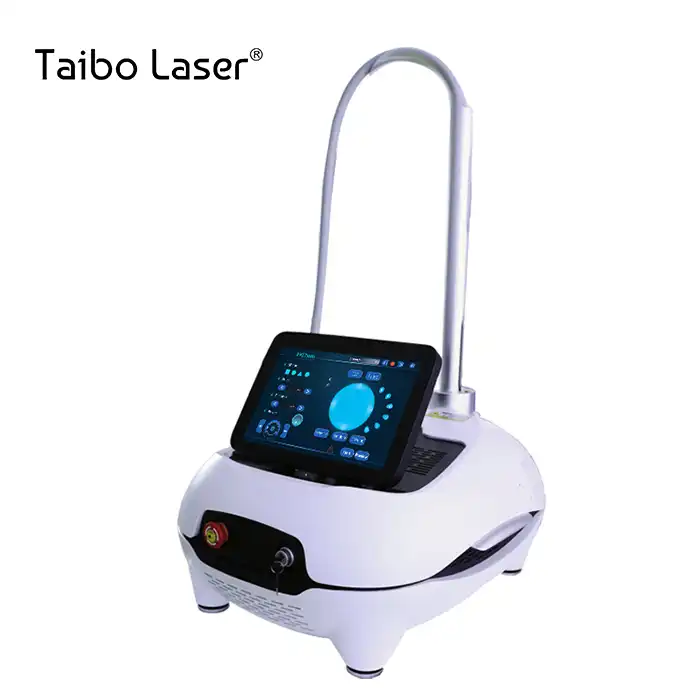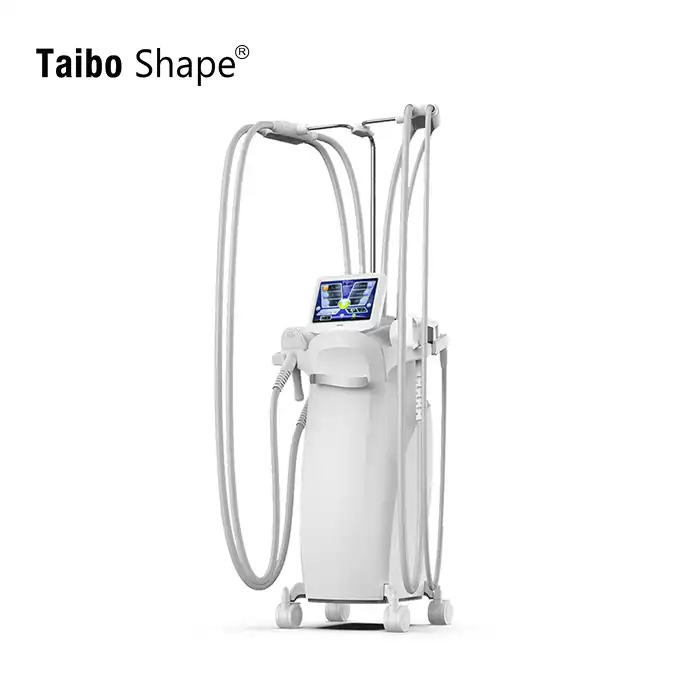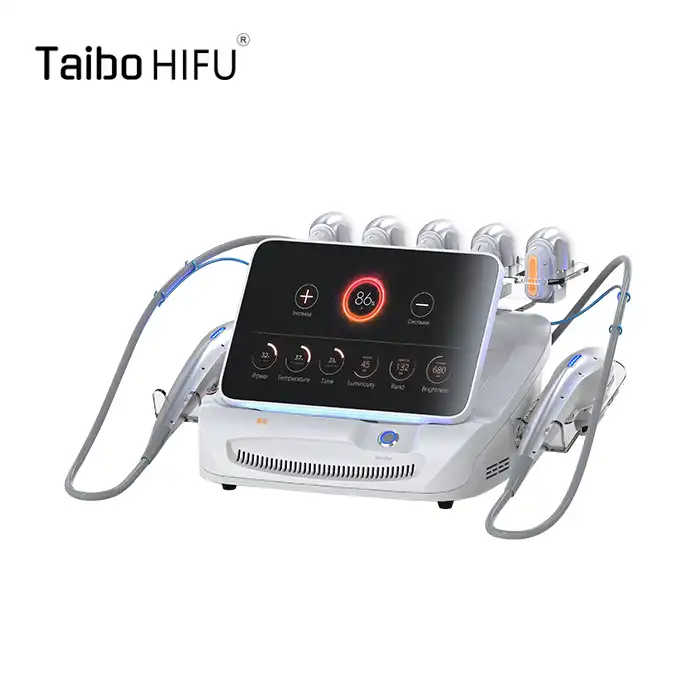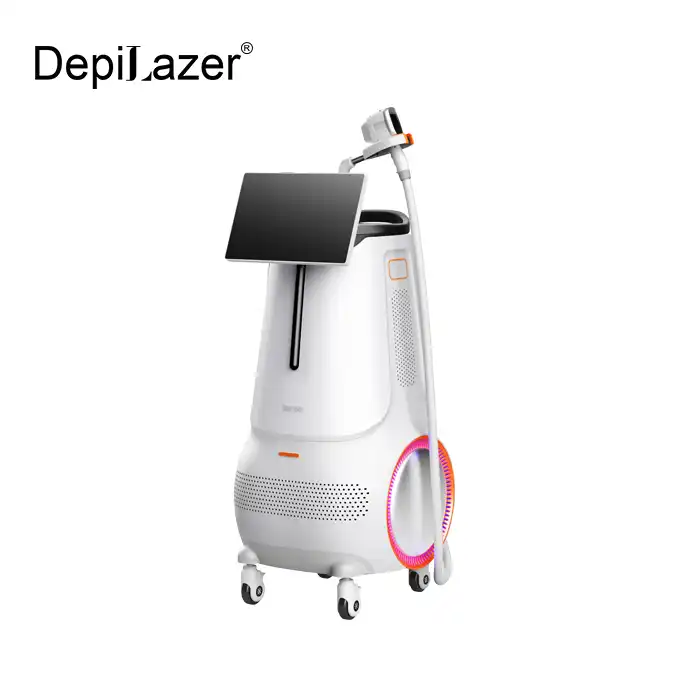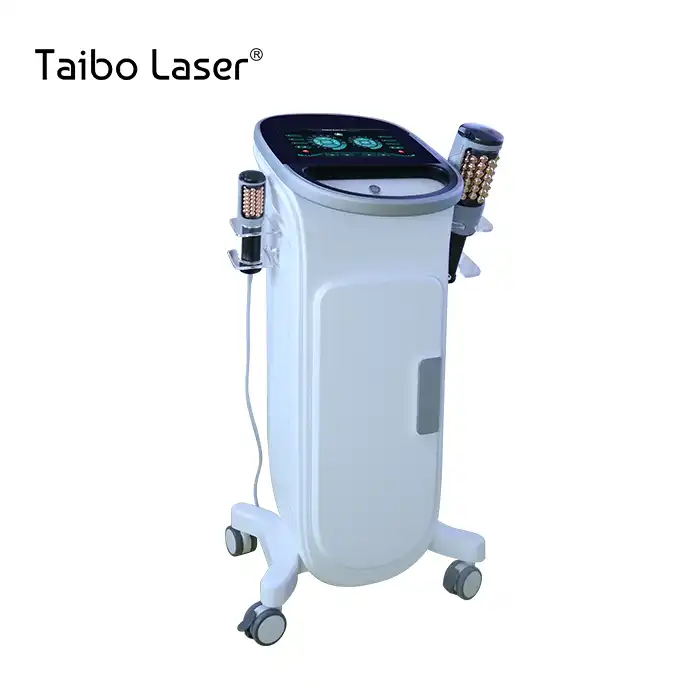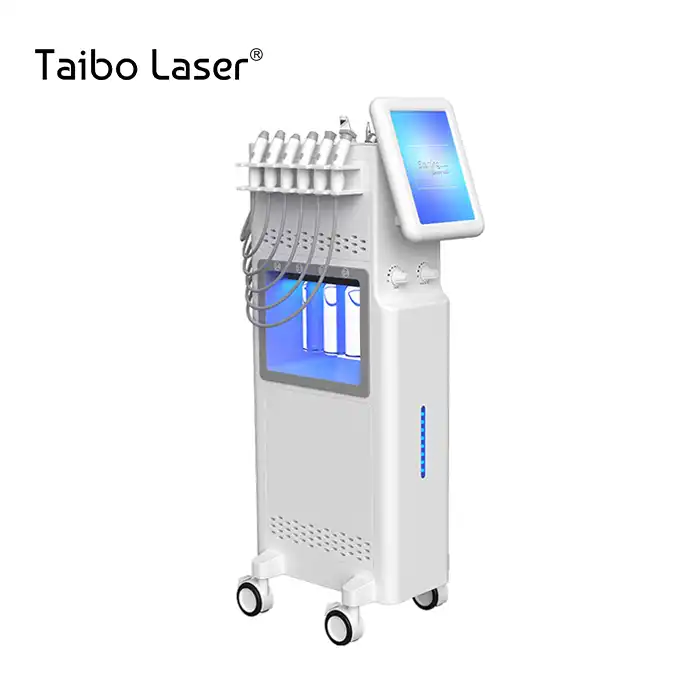
Multi-Wavelength Picosecond Q-Switch Laser for Various Skin Types
2025-09-09 09:03:50
Modern aesthetic medicine has revolutionized skin treatment with the advancement of laser technology, particularly the multi-wavelength picosecond Q-switch laser system. This sophisticated technology represents a significant breakthrough in addressing diverse skin concerns across all skin types and ethnicities. The picosecond q switch laser combines the precision of ultra-short pulse delivery with multiple wavelength options, creating an unparalleled treatment solution for pigmentation disorders, tattoo removal, and skin rejuvenation procedures that were previously challenging to address safely and effectively.
Advanced Technology Behind Multi-Wavelength Picosecond Systems
Ultra-Short Pulse Technology and Photoacoustic Effects
The fundamental principle that sets picosecond q switch laser technology apart from traditional nanosecond systems lies in its ability to deliver energy in ultrashort pulses measured in picoseconds rather than nanoseconds. The QS lasers deliver ultrashort pulses in the nanosecond-domain with high peak powers, but picosecond technology takes this further by reducing pulse duration to trillionths of a second. This dramatic reduction in pulse width creates a photoacoustic effect rather than a photothermal effect, meaning the energy shatters pigment particles through mechanical force rather than heat. The 350-picosecond pulse width of advanced systems ensures that surrounding tissue remains unaffected while targeted chromophores are fragmented into microscopic particles that can be naturally eliminated by the body's lymphatic system. This photoacoustic mechanism is particularly beneficial for treating stubborn pigmentation that has historically been resistant to conventional laser treatments. The precise energy delivery minimizes collateral thermal damage, reducing the risk of post-inflammatory hyperpigmentation and making the treatment suitable for darker skin types. The technology's ability to create controlled micro-injuries through photoacoustic waves also stimulates collagen production and cellular renewal, providing dual benefits of pigment removal and skin rejuvenation.
Multiple Wavelength Capabilities and Target Specificity
The multi-wavelength approach of modern picosecond q switch laser systems typically incorporates three primary wavelengths: 1064nm, 755nm, and 532nm, each specifically designed to target different chromophores and penetrate various depths within the skin structure. Q-Switched laser using 532nm wavelength can target red, orange & purple inks – Picosecond laser using 1064nm can target black, blue & green inks, while the 755nm wavelength provides optimal absorption for melanin-rich lesions. This wavelength diversity allows practitioners to customize treatment protocols based on the specific pigmentation type, depth, and patient's skin characteristics. The 1064nm wavelength penetrates deepest into the dermis, making it ideal for treating deep-seated pigmentation such as nevus of Ota, blue nevi, and professional tattoos. Its longer wavelength also provides better safety profiles for darker skin types as it has reduced melanin absorption in the epidermis. The 755nm wavelength offers excellent melanin absorption properties, making it particularly effective for treating café-au-lait macules, solar lentigines, and amateur tattoos. The 532nm wavelength targets superficial pigmentation and vascular lesions, effectively addressing freckles, superficial age spots, and red tattoo inks.
Energy Delivery Systems and Beam Quality
The sophisticated energy delivery system in professional picosecond q switch laser equipment ensures consistent and precise treatment outcomes. With adjustable energy outputs ranging from 100mJ to 2000mJ across different wavelengths, practitioners can fine-tune treatment parameters to match individual patient needs and treatment objectives. The high energy density capability of up to 2000mJ/cm² allows for effective treatment of even the most resistant pigmentation while maintaining safety protocols. Modern systems incorporate advanced beam homogenization technology that creates uniform energy distribution across the treatment area, eliminating hot spots that could cause uneven results or tissue damage. The adjustable spot sizes from 2-10mm provide versatility in treating both large areas and precise small lesions. The integrated cooling systems, combining air and water cooling mechanisms, ensure optimal laser performance and patient comfort throughout extended treatment sessions.
Clinical Applications and Treatment Versatility
Comprehensive Pigmentation Management
The versatility of multi-wavelength picosecond q switch laser technology extends across a broad spectrum of pigmentation disorders, offering solutions for both acquired and congenital pigmented lesions. Conditions like melasma, café-au-lait macules, nevus of Ota, and post-inflammatory hyperpigmentation (PIH) can all be effectively treated thanks to the laser's ability to break down melanin clusters embedded in different layers of the skin. The technology's precision allows for selective targeting of pigment-containing cells while preserving surrounding healthy tissue, resulting in more predictable outcomes with reduced risk of complications. Melasma treatment, historically one of the most challenging pigmentation disorders to manage, benefits significantly from the photoacoustic approach of picosecond technology. The gentle yet effective fragmentation of melanin deposits reduces the inflammatory response that often exacerbates melasma, leading to better long-term results. For post-inflammatory hyperpigmentation, the technology's ability to target pigment without creating additional inflammation makes it an ideal treatment choice for patients with darker skin types who are at higher risk for developing PIH from traditional laser treatments. Solar lentigines and age spots respond exceptionally well to multi-wavelength picosecond treatments, with many patients experiencing significant improvement after just one session. The technology's ability to target pigment at various depths ensures comprehensive treatment of these lesions, which often have pigment distributed through multiple skin layers. Café-au-lait macules and other birthmarks that were previously difficult to treat now show promising results with picosecond q switch laser technology, offering hope to patients who had limited treatment options in the past.
Advanced Tattoo Removal Capabilities
Professional and amateur tattoo removal represents one of the most demanding applications for laser technology, requiring the ability to target multiple ink colors at various depths while minimizing tissue damage. Multi-wavelength picosecond q switch laser systems excel in this application due to their superior ability to fragment ink particles into smaller sizes that can be more efficiently eliminated by the body's natural processes. The photoacoustic mechanism creates a more complete breakdown of tattoo pigments compared to traditional nanosecond lasers, often resulting in fewer treatment sessions and better clearance rates. Different tattoo inks require specific wavelength targeting for optimal results. Black and dark blue inks respond best to 1064nm wavelength, while green and blue inks are effectively targeted by 755nm wavelength. Red, orange, and yellow inks require the 532nm wavelength for optimal clearance. The ability to switch between wavelengths during a single treatment session allows practitioners to address multicolored tattoos comprehensively, improving treatment efficiency and patient satisfaction. The reduced thermal damage associated with picosecond technology translates to faster healing times and reduced risk of scarring, making it particularly beneficial for patients with tattoos in visible areas. The technology's effectiveness on previously treated tattoos that have shown resistance to conventional laser removal opens new possibilities for complete tattoo clearance in challenging cases.

Comprehensive Skin Rejuvenation and Anti-Aging Applications
Beyond pigmentation and tattoo removal, multi-wavelength picosecond q switch laser systems offer significant benefits for overall skin rejuvenation and anti-aging treatments. The photoacoustic energy delivery stimulates collagen production and cellular turnover, resulting in improved skin texture, reduced fine lines, and enhanced overall skin quality. This dual-action approach makes the technology particularly valuable for patients seeking comprehensive facial rejuvenation. The treatment's ability to address multiple skin concerns simultaneously makes it an efficient option for busy patients. A single session can target pigmentation irregularities, improve skin texture, reduce pore size, and stimulate collagen production for long-term anti-aging benefits. The minimal downtime associated with picosecond treatments makes them suitable for patients with active lifestyles who cannot accommodate extended recovery periods. Acne scar treatment benefits from the technology's ability to create controlled micro-injuries that stimulate tissue remodeling and collagen production. The precision of picosecond energy delivery allows for targeted treatment of individual scars while preserving surrounding healthy tissue. Combined with the pigmentation benefits, patients with post-acne hyperpigmentation and scarring can achieve comprehensive improvement in a single treatment protocol.
Safety Profiles and Skin Type Compatibility
Universal Skin Type Safety
One of the most significant advantages of multi-wavelength picosecond q switch laser technology is its proven safety profile across all skin types, including darker skin tones that have historically been at higher risk for complications with laser treatments. The 1064nm QS laser has relatively low absorption in melanin and high absorption in water, which makes it suitable for dark skin type as well. This safety profile results from the technology's photoacoustic mechanism, which minimizes thermal damage and reduces the risk of post-inflammatory hyperpigmentation that can occur with heat-based laser systems. The ultra-short pulse duration creates precise energy delivery that targets specific chromophores without affecting surrounding tissue. This selectivity is particularly important for patients with darker skin types, where excessive thermal energy can trigger melanocyte activation and result in unwanted pigmentation changes. The reduced thermal diffusion associated with picosecond pulses allows for safe treatment of pigmented lesions in patients who were previously considered poor candidates for laser therapy. Clinical studies have demonstrated the effectiveness and safety of picosecond technology across various ethnic groups and skin types, with minimal risk of adverse effects when appropriate treatment parameters are used. The technology's ability to customize treatment protocols based on individual skin characteristics and pigmentation patterns ensures optimal outcomes while maintaining safety standards.
Minimized Side Effects and Rapid Recovery
The advanced technology of picosecond q switch laser systems significantly reduces common side effects associated with traditional laser treatments. The photoacoustic mechanism creates less thermal damage, resulting in reduced erythema, swelling, and discomfort following treatment. Most patients experience only mild redness that resolves within hours to a few days, making the treatment suitable for individuals with limited downtime availability. The reduced risk of hyperpigmentation and hypopigmentation changes makes the technology particularly attractive for patients concerned about potential complications. The precise energy delivery ensures that only target chromophores are affected, preserving the normal melanocyte function in surrounding areas. This selectivity is crucial for maintaining natural skin coloration and preventing the patchy appearance that can sometimes result from less precise laser treatments. Post-treatment care requirements are minimal compared to traditional laser procedures, with most patients able to resume normal activities immediately following treatment. The reduced inflammatory response means that typical post-laser complications such as prolonged redness, swelling, or blistering are rare occurrences when appropriate treatment protocols are followed.
Long-term Safety and Efficacy Data
Long-term follow-up studies of patients treated with multi-wavelength picosecond q switch laser systems demonstrate sustained results with minimal risk of recurrence or delayed complications. The technology's ability to create complete pigment fragmentation reduces the likelihood of pigmentation returning, particularly important for conditions like melasma that have high recurrence rates with incomplete treatment. The stimulation of natural collagen production and cellular renewal processes continues for months following treatment, resulting in ongoing improvement in skin quality and appearance. This biological response contributes to the long-term satisfaction rates reported by patients who undergo picosecond laser treatments. The technology's proven track record in clinical settings worldwide provides confidence in its long-term safety and efficacy profile.
Conclusion
Multi-wavelength picosecond Q-switch laser technology represents a paradigm shift in aesthetic laser treatments, offering unprecedented precision, safety, and versatility for diverse skin concerns across all skin types. The combination of ultra-short pulse delivery, multiple wavelength options, and photoacoustic energy mechanisms creates an optimal treatment platform for pigmentation disorders, tattoo removal, and comprehensive skin rejuvenation. As a leading China picosecond q switch laser factory, Xi'an Taibo Laser Beauty Company brings over 15 years of manufacturing expertise to this advanced technology.
As a trusted China picosecond q switch laser supplier and China picosecond q switch laser manufacturer, Taibo offers comprehensive China picosecond q switch laser wholesale solutions with competitive picosecond q switch laser price options for distributors worldwide. Our High Quality picosecond q switch laser systems come with complete certification, two-year warranty, and professional training support. For practitioners seeking picosecond q switch laser for sale, our experienced team provides customized solutions, OEM/ODM services, and ongoing technical support to ensure optimal treatment outcomes and practice success. Contact us today at susan@taibobeauty.com to discover how our advanced picosecond technology can enhance your practice capabilities and deliver exceptional results for your patients across all skin types and treatment applications.
References
1. Kim, J.H., Lee, S.W., et al. "Comparison of the picosecond and Q-switched Nd:YAG lasers in the treatment of pigmentary disorders: a retrospective case series." Journal of the Korean Society for Laser, Dermatology & Plastic Surgery, 2024.
2. Negosanti, F., Bonciani, D., et al. "Q-Switched 1064/532 nm Laser with Picosecond Pulse to Treat Benign Hyperpigmentations: A Single-Center Retrospective Study." Applied Sciences, vol. 11, no. 16, 2021.
3. Anderson, R.R., Parrish, J.A. "Selective photothermolysis: precise microsurgery by selective absorption of pulsed radiation." Science, vol. 220, no. 4596, 1983.
4. Sadighha, A., Mohaghegh Zahed, G. "Meta-analysis of Q-switched Nd:YAG laser for treatment of melasma." Journal of Cosmetic and Laser Therapy, vol. 22, no. 1, 2020.
YOU MAY LIKE













